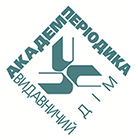MODELS OF INNOVATIVE ACTIVITY
Section Economics: Economic and Legal Problems of Sustainable Development
Abstract
The models of the innovation process are analyzed, which are purely structural and are characterized by a significant simplification of ideas about the innovation process, ignoring information and management flows, disruption of some dynamic relationships and sequences of functions. However, such simplified models make it possible to apply the principles of process management methodology and identify “bottlenecks” of the innovation process: cost centers, duplication of functions, as well as the absence or incompleteness of information. The first model of the innovation process “technological push” — is described as a linear sequence of cyclically repeating stages. In the second model of the innovation process — “market challenge” — the market is a source of innovative ideas and forms an order for innovative development, which is transferred either to the corporate research center of the company that conducted marketing research, or external research structure — university, laboratory, etc. The third model of the innovation process is to identify logically consistent, functionally separate, but interacting and interdependent stages. This model is a combination of the first and second with an emphasis on the relationship of technological capabilities and capabilities with market needs and is implemented at the meso-level. The fourth model of the innovation process is the Japanese model of best practices, which focuses on the parallel activities of integrated groups, external horizontal and vertical links. The choice of the basic model of innovation is largely due to historically established institutional systems. Because of the conducted research, the process of creation of the Center of transfer of technologies for commercialization of results of the scientific researches and developments received with use of means of the state budget and functions, which it will carry out, is offered. Public-private partnership programs in industrialized countries are analyzed, which stimulate close contacts between the scientific and industrial sectors of the economy and focus public research on industrial innovation. We also proposed the concept of iterative marketing — which is repeated throughout the innovation cycle of a set of specific activities, the result of which is the active formation of the product or service and future markets for its consumption.
Keywords
innovation model, Technology Transfer Center, innovation activity, model, public-private partnership
Downloads
References
2. Belousov D.R., Solncev O.G., Hromov M.Ju. Postroenie dolgosrochnogo nauchno-tehnologicheskogo prognoza dlja Rossii metodom Forsajt. Problemy prognozirovanija. 2007. № 5. P. 18—25 [Белоусов Д.Р., Солнцев О.Г., Хромов М.Ю. Построение долгосрочного научно-технологического прогноза для России методом Форсайт. Проблемы прогнозирования. 2007. № 5. С. 18—25].
3. Rothwell R. Toward the fifth-generation innovation process. International Marketing Review. 1994. No. 1. P. 7—31.
4. Innovacionnaja jekonomika. Pod obshh. red. A.A. Dynkina, N.I. Ivanovoj. Moscow: Nauka, 2001. 294 p. [Инновационная экономика. Под общ. ред. А.А. Дынкина, Н.И. Ивановой. Москва: Наука, 2001. 294 с.].
5. Ramos M., Sequeira T. Incentivos ao Investimento e Desenvolvimento Regional. Tese de Doutoramento. Universidade de Tras-os-Montes e Alto Douro, Vila Real, 2006. 143 p.
6. Hotjasheva O.M. Innovacionnyj menedzhment. Saint Petersburg: Piter, 2005. 318 p. [Хотяшева О.М. Инновационный менеджмент. Санкт-Петербург: Питер, 2005. 318 с.].
7. Klochkov V.V. Upravlenie innovacionnym razvitiem naukoemkoj promyshlennosti: modeli i reshenija. Moscow: IPU RAN, 2010. 168 p. [Клочков В.В. Управление инновационным развитием наукоемкой промышленности: модели и решения. Москва: ИПУ РАН, 2010. 168 с.].
8. Berry L., Shostack G., Upah G. Relationship marketing. In Emerging Perspectives of Service Marketing. Chicago, IL, 1983. 185 p.
9. McGarry E.D., Cox R., Alderson W. Some functions of marketing reconsidered. In Theory in Marketing. Irwin: Homewood, IL, 1950. 307 p.
10. Alderson W. Dynamic Marketing Behavior: A Functionalist Theory of Marketing. Irwin: Homewood, IL, 1965. 237 p.
11. Adler L. Symbiotic marketing. Harvard Business Review. 1966. No. 45 (2). P. 59—71.
12. Arndt J. Toward a concept of domesticated markets. Journal of Marketing. 1979. No. 43 (4). P. 69—75.
13. Hakansson H., Snehota I. No business is an island. Scandinavian Journal of Management. 1989. No. 5 (3). P. 187—220.
14. Hallen L., Johanson J., Seyed-Mohamed N. Interterm adaptation in business relationships. Journal of Marketing. 19914. No. 558 (2). P. 29—37.
15. Anderson J., Hakansson H., Johanson J. Dyadic business relationships within a business network context. Journal of Marketing. 1994. No. 58 (4). P. 1—15.
Abstract views: 199 PDF Downloads: 185









